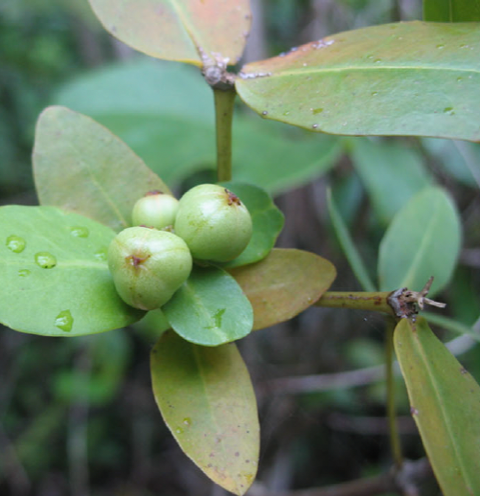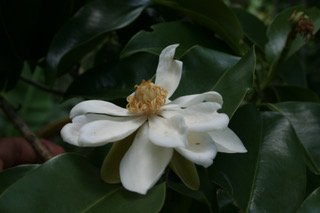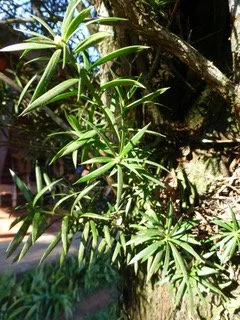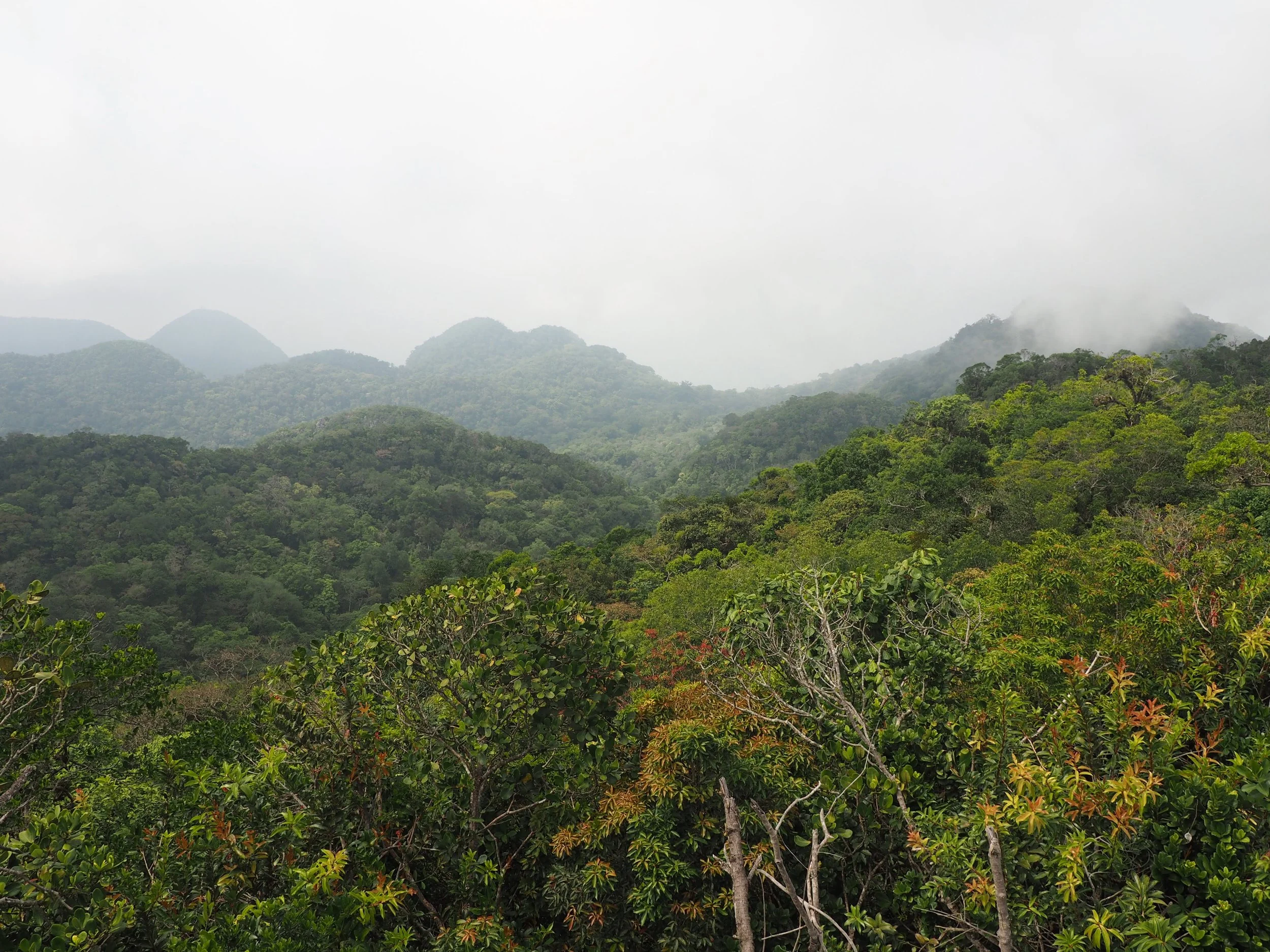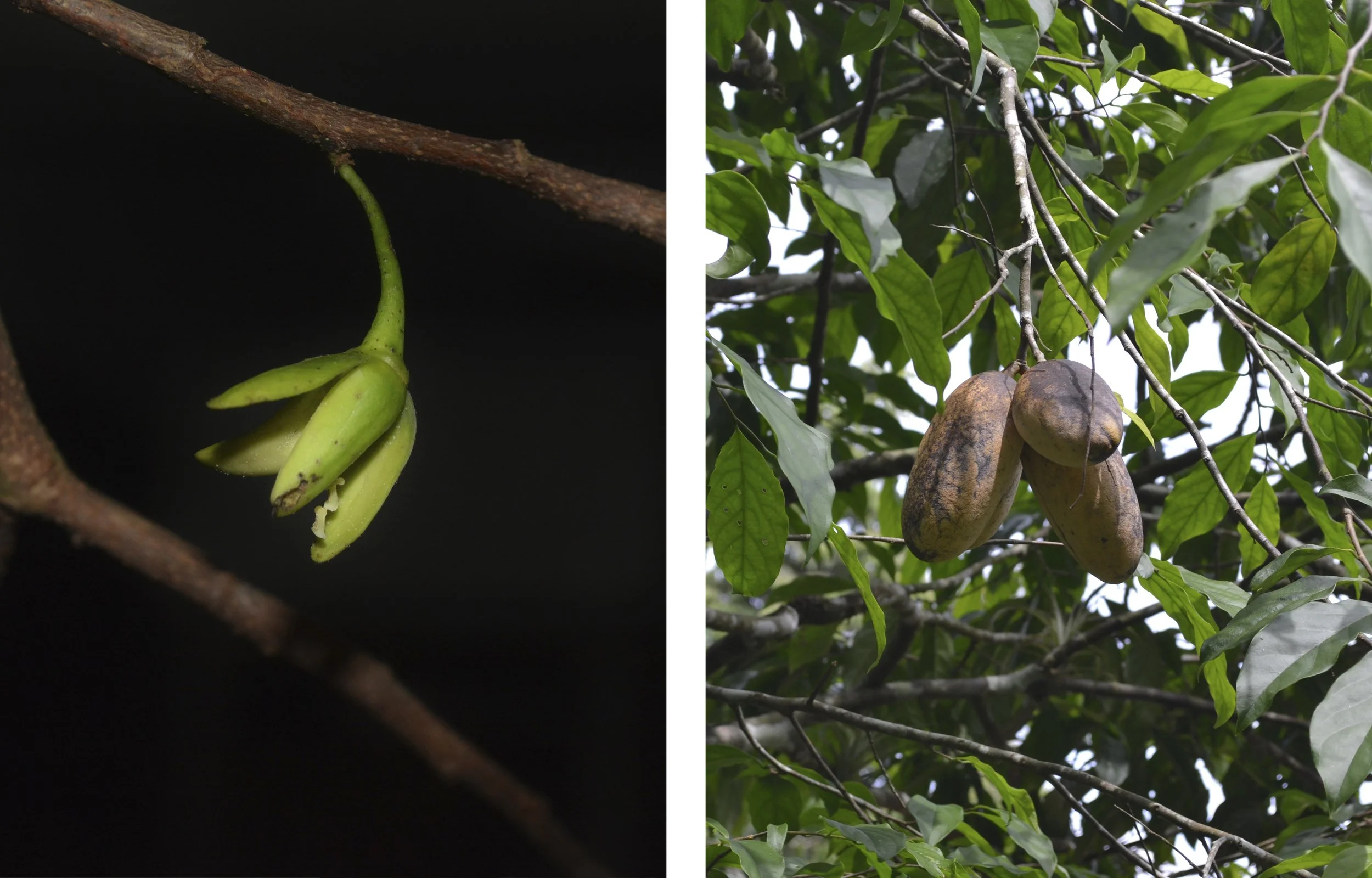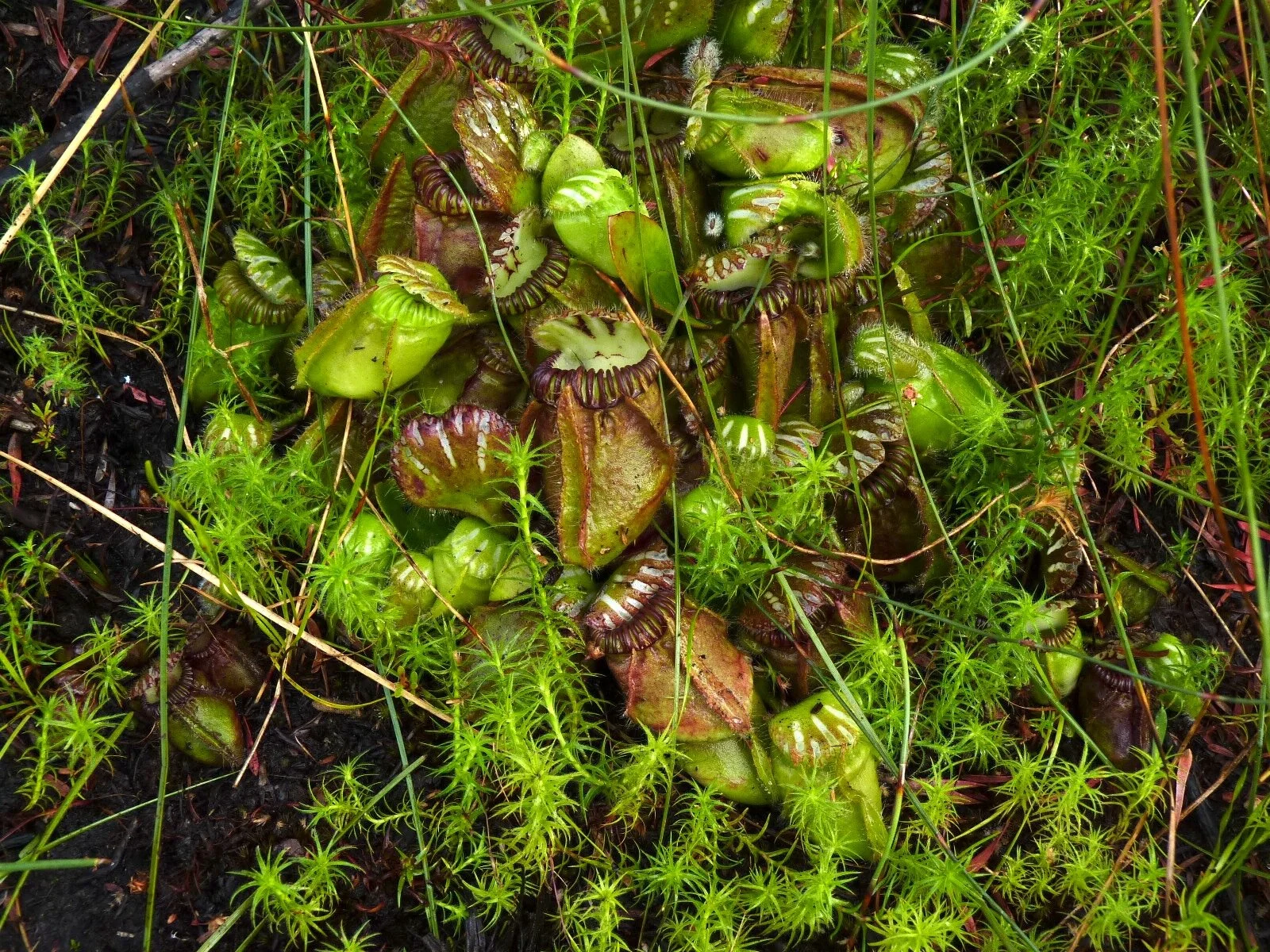
In August 2020 TRLP launched our Seed Grant Program. This initiative fosters collaborations with in-country conservation partners, providing modest but essential funding to bridge funding gaps or to enhance existing conservation activities. Individual activities that will have outsized positive impacts relative to the contribution are ideal.
2022 PARTNERing WITH Institute of Jamaica
Continuing PARTNERship WITH Planta!
2021 PARTNERING WITH Universidad Nacional Autónoma de México
Partnering with California Academy of Sciences
2020 PARTNERING WITH Fundación Progressio
Partnering with Planta!
PARTNERING WITH The National Tropical Botanical Garden
2022 GRANTEES
Field Assessments of Selected Critically Endangered Species in Jamaica
Dendrocousinsia fasciculata in fruit
Dendrocousinsia lesteri var. lesteri
Photos Source: T. Commock, K. C. St. E. Campbell, J. Meikle, J. Francisco-Ortega & B. Jestrow (2014) Conservation and taxonomic updates for the Jamaica’s endemic genus Dendrocousinsia (Euphorbiaceae), Britannia, DOI 10.1007/s12228-014-9357-x
For a number of years, the Natural History Museum of Jamaica, Institute of Jamaica (NHMJ/IoJ), has engaged in a conservation initiative to verify the presence of critically threatened plant species in the field. This work includes conducting population counts; documenting environmental characteristics, including threats; and, collecting specimens, seeds, images and GPS points to allow for more accurate mapping and updating the IUCN Red List through re-assessments where necessary. The species NHMJ/IoJ is targeting include seven critically endangered species Dendrocousinsia howardiana, Dendrocousinsia crenulata, Dendrocousinsia lesteri var. lesteri, Dendrocousinsia lesteri var. glabrata, Dendropanax grandis, Ardisia byrsonimae, and Ocotea harrisii. With the majority of Jamaica’s critically endangered plant species in need of IUCN Threatened Species reassessment, this project will help to mobilize and provide funding to carry out the requisite fieldwork.
The Institute of Jamaica's general goal is to gather current data to be used for assessments and public awareness initiatives. These data on the target species will inform and allow the key conservation actions by the relevant stakeholders to be taken to ensure the species continued survival and existence
The four Dendrocousinsia species will be comprehensive assessments and the remaining three species which are all from one local hotspot will be less intensive with an objective of scouting and identifying the locations of their populations or sub-populations for further investigation in the future. All the species however are listed on the IUCN Red List as Critically Endangered and are in need of field assessments. Some species been updated in the recent past using previous field knowledge and herbarium data however they would still benefit from the assessment to verify if the updates were correct and/or if there are any new development, threats, changes with regard to any factor that can influence the survival of the species. The project will also impact positively on the other target species that have not been updated recently through the gathering of current data that will inform conservation actions or plans.
Samples of the species will also be collected including seeds and cuttings where possible to attempt exsitu propagation. The propagation will be carried out by competent staff at the nurseries at the Royal Botanic Gardens, Hope and the Public Gardens Division. There is a possibility of reintroduction of ex situ materials if propagation methods are successful.
Supporting Planta! and Cuba's Native Plant Nurseries for Threatened Tree Recovery
Mantequero (Magnolia cubensis subsp. acunae).
Photo courtesy of L. Gonzales Torres.
Sabina (Podocarpus angustifolius).
Photo Wikimedia.org
The Cuban flora includes 1,735 native trees, 827 of them are endemic to the country. 173 Cuban trees, 46% of all tree species assessed to date, are threatened by extinction. The most common threats to these species are illegal logging, habitat degradation, biological invasions, and agriculture. The long-term goal of TRLP's Cuban partner, Planta!, is to preserve and recover Cuban threatened tree populations in partnership with local communities. TRLP's funding support will allow Planta! to support five native plant nurseries in the production of native threatened species during 2022.
Over the years, Planta! has promoted the local production of threatened plants, aiming to reinforce declining plant populations and trained native plant producers to access funds from government programs to support these actions. Due to the economic crisis caused by the pandemic, TRLP granted an additional Seed Grant to support a second production year of five native plant nurseries. These growers are producing at least 10,000 individual plants of threatened endemic vascular plants, mostly Magnolia cubensis and Pocarpus angustifolius, but also other threatened plants: Cordia dumosa, Diospyros grisebachii, Manilkara jaimiqui, Coccothrinax victorinii, Hymenaea torrei, Behaimia cubensis, Copernicia roigii, Ziziphus havanensis, and Cordia curbeloi. The two of particular concern as described below.
Mantequero (Magnolia cubensis subsp. acunae) is considered Critically Endangered, with only four known locations across the Guamuhaya massive, and a total number of 472 individuals in the wild. Agriculture, deforestation and illegal cutting has affected the habitat for many years. Currently, illegal logging, small population size, invasive species and agriculture are the main threats to the species. This species is a major structural species of the rainforests where it occurs.
Sabina (Podocarpus angustifolius) is considered Critically Endangered, with only two locations in Topes de Collantes and Lomas de Banao, Sancti Spiritus. Total number of mature individuals in the wild is 160, although the effective population size is 80, assuming a 1:1 sex ratio, as the species is dioecious. Like mantequero, this species is a major structural species of the rainforests where it occurs; it may also be an important species for rainforest restoration as it grows relatively well in open areas.
2021 GRANTEES
Ecology and conservation of Tridimeris, a genus of Annonaceae endemic to Mexico
Selva El Ocote Biosphere Preserve in Chiapas
Tridimeris flower (L) and fruit (R)
Hector Gómez Dominguez conducting field work in La Pera preserve
Gaps in knowledge about the biology of imperiled species present a significant roadblock to plant conservation initiatives. It is critical that we close these gaps since robust understanding of organismal and ecological parameters (i.e., reproductive biology, species interactions, abiotic site constraints, population genetics, etc.) fuels development of effective conservation strategies. A group of botanists at the Universidad Nacional Autónoma de México (Dr. Andrés Ernesto Ortiz Rodríguez and María Fernanda Martínez Velarde) and Senda Sustentable, A.C. (Hector Gómez Dominguez) is focused on this very objective for rare plants in the tropical karst forests of southern Mexico. The team has received a TRLP Seed Grant to advance their work.
The grant is in support of investigations on Tridimeris, a genus in the Annonaceae (or custard apple) family that is endemic to Mexico. The whole lineage is poorly known from a biological standpoint and this project will generate key information on reproductive ecology of Tridimeris. The emphasis will be T. chiapensis, a species only recently described by science (discovered and named by the scientific community) so in need of further characterization. T. chiapensis has been assessed as Critically Endangered under the IUCN criteria so a conservation strategy must also be implemented; this is one of the team’s longer-term goals.
Field work is currently underway in La Pera preserve in Chiapas, Mexico (the only known site for the species) and will continue over multiple seasons. Near-term results will include detailed phenological characterization - evaluation of thermogenesis, scent production, pollinator dynamics and fruit and seed properties. Subsequent stages of the project will entail development of propagation protocols and a conservation strategy for the species. The latter will be integrated into a broader economic-cultural strategy that contributes to development of local communities within a conservation framework for La Pera and other biodiverse karst forests in the region.
SPECIES DESCRIPTION: Andres Ernesto Ortiz-Rodriguez, Marcos Alberto Escobar-Castellanos, and Miguel Angel Pérez-Farrera. 2016. Phylogenetic Analyses and Morphological Characteristics support the Description of a Second Species of Tridimeris (Annonaceae). PhytoKeys. 74: 79-85. DOI: 10.3897/phytokeys.74.10371
Advancing Community-based Conservation in Southwestern Madagascar
The arid landscape of southwestern Madagascar is home to an extraordinary floristic assemblage — the Malagasy spiny thicket. Endemism defines the ecoregion with almost the entire indigenous flora found nowhere else on earth. Tragically, this exceptional biodiversity is caught in the crosshairs of poverty and climate change. The remoteness of the region has hampered conservation efforts and left the local community extremely vulnerable to climate change impacts and exploitation of natural resources by external entities.
The Red List Project has provided a Seed Grant to the California Academy of Sciences (CAS), in support of their work to address mounting biodiversity loss in this region. In collaboration with University of Antananarivo (UofA), CAS botanists have initiated a long-term community-based conservation project. The heart of the project is a remnant of white-sand, spiny thicket adjacent to Lavavolo village. The pulse of the project is the community itself. The objective is to mobilize resources and empower the community to steward their natural heritage into the foreseeable future.
To this end, the long term goal is to implement a management plan encompassing sustainable use, restoration and inclusive land protection. The starting point for this project is a Comprehensive botanical assessment within white-sand habitat between Itampolo and Ankazoabo. TRLP funding will support an in-country partner conducting preliminary botanical assessment and ethnobotanical studies in the vicinity of the Lavavolo community. In addition, it will allow the team to engage in the following actions:
• Aggregation of botanical data (inventory, vegetation mapping, etc.) conducted within this region
• Introductory community and partner meetings
• Delimitation of property ownership and/or management units with the area
As is the case for any community-based conservation program, success will be contingent on realistic strategies for management of resources. This requires respect for near-term community needs along with incentivized long-term benefit.Both are integral to this project. Success is equally reliant on local stewardship, so capacity building is fundamental. Field activities will be conducted by Malagasy graduate students with mentorship from principal investigators from CAS and UofA. Local community members will also be trained and remunerated for field support. On a broader scale, community members will be key in formulation of a long-term plan for preservation of critical habitat in the vicinity of Lavavolo.
2020 GRANTEES
Supporting Magnolia conservation in the cloud forests of the Dominican Republic
Fruit of M. domingensis in the development phase
Gabriela Rosa, Ramón Elías, and Rolando Sanó
The Dominican magnolia (Magnolia domingensis) is an IUCN “Critically Endangered” species that has been the conservation focus of Fundación Progressio for more than two decades, and is also the focus of a conservation action plan by the Red List Project partner Botanic Gardens Conservation International (BCGI). Once thought to be widespread on the island of Hispaniola, it is now considered extinct in Haiti, and restricted to only two populations in the cloud forests of the Dominican Republic, one in Loma Rodríguez and the other in Loma Barbacoa, Peravia province. Together these two geographic distribution extends across only six square kilometers of its original habitat.
This Red List Project Seed Grant is supporting Fundación Progressio's project to augment existing M. Domingensis populations that have been diminished in size, and to reintroduce this magnolia to habitat where it once occurred. Natural regeneration—mostly the result of fallen trees that resprout from the base—is extremely limited. Little to no seedling recruitment occurs.
Fundación Progressio has extensive knowledge and deep experience in the collection of seeds from natural populations as well as in the production of seedlings in a nursery setting. They have propagated approximately 800 plants that are held in the native plant nursery of the Ébano Verde Scientific Reserve (RCEV). This nursery stock is sufficient to establish a two hectare plantation as an initial step in reintroducing these magnolias to the cloud forest.
Fundación Progressio will do this magnolia outplanting in October 2020 to take advantage of favorable climatic conditions. In early 2021, two trips to collect additional seed will continue this conservation work—a trip to Loma Rodríguez in January and another in February to Loma Barbacoa.
In September 2021, a second habitat will be prepared for outplanting, where the Dominican magnolia will be eventually restored to protected wildlands. The magnolia saplings will be transported first by truck from the RCEV nursery to Loma Rodríguez. From there, the plants will travel, again by truck, to Valdesia, Peravia and on to the community of Laguna, Valdesia. The final transport to Loma Rodríguez will navigate the difficult terrain via horse and mule.
Helping Cuba's coffee farmers transition to native species shade plants
Ten percent of Cuba's 1,735 native trees are threatened by extinction due to illegal logging, habitat degradation, biological invasions, and agriculture. Rainforest clearing has led to the destruction of habitat, as illegal logging and careless management of the region's extensive coffee plantations continues to threaten the survival of the remaining populations. TRLP’s grant to Planta!, an environmental NGO headquartered in Vancouver, British Columbia, Canada, allows it to upgrade its native plant nursery at the Topes de Collantes nature reserve park in the Guamuhaya Mountains of central Cuba. This region is one of the most species-rich on the island and a place of renowned natural beauty.
Topes de Collantes is home to the critically endangered Magnolia cubensis subsp. acunae, a plant with large fragrant white flowers and a wood of remarkable strength, occurring in fewer than 10 localities, none of which shows a healthy population structure. Most populations contain only 1 to 3 old individuals, and only one presents young trees (12 in total). No seedlings have been found.
Another endangered plant from the region, Podocarpus angustifolius, is a rare conifer known from only two populations, one represented by a single adult plant and the other by no more than 174 mature individuals. Both species grow between 700 and 950 m above sea level, the same elevation range and area occupied by Cuba’s montane rainforests.
During the last decade, Planta! teams have planted over 3,000 magnolia saplings and additional 1,660 Podocarpus in region’s protected areas, and to lesser extent, in coffee farms. The TRLP financial support will allow Planta! to increase the nursery production of these rare trees and to support landowners transitioning from non-native canopy trees typically found on coffee plantations to canopy trees of native species with locally sourced seeds. As Planta! helps to preserve and recover Cuban threatened tree populations, in partnership with local communities, the involvement of farmers in conservation is key to the long-term sustainability of these efforts. The Red List Project is proud to support this critical work.
Supporting seed collection and propagation of the threatened Maiapilo (Capparis sandwichiana)
Photo: Ken Wood
Photo: Dustin Wolkis
Photo: Seana Walsh
Hawai’i is renowned for its biodiversity, particularly its native flora—almost 90% of its flora is found nowhere else in the world. These islands are also known as the “endangered species capital of the world,” with more than 100 plants species confirmed as extinct and another 200 species known only from populations of 50 or fewer individual remaining in the wild.*
The Red List Project is pleased to partner with the National Tropical Botanical Garden (NTBG) to help conserve Maiapilo (Capparis sandwichiana) on the island of Kaui’a. Maiapilo is a medium-sized shrub in the caper family (Capparaceae), most commonly found on cliffs, lava flows, emerged coral reefs and in rocky gulches of coastal areas of the Hawaiian archipelago. Its beautiful night-blooming white flowers are large and extremely fragrant flowers, opening after sunset and lasting only one night, withering just after sunrise.
Capparis sandwichiana is known from several of the Northwestern Hawaiian Islands and the eight main Hawaiian Islands. Although the total population numbers are in the thousands across its range, subpopulations and suitable habitat continue to decline rapidly. On Kauaʻi, the total number of mature individuals is only around 500 individuals in populations are threatened by habitat loss through coastal development and exotic species, sea level rise, and by predation by feral goats and rats.
Previous work on C. sandwichiana by NTBG staff included the mapping and tagging all individuals on Kauaʻi that could be accessed on foot, an effort that resulted in documenting 11 individuals at Polihale on the west side of Kauaʻi and 57 individuals in the Māhāʻulepū area of southeast Kauaʻi. Not surprisingly, no regeneration was observed and rat predation of immature fruits was ubiquitous.
This conservation project seeks to
• Obtain targeted conservation collections of seeds from wild individuals that have been mapped and tagged,
• Store a portion of seeds in NTBG’s Seed Bank and Laboratory,
• Propagate plants in NTBG’s Conservation and Horticulture Center nursery that are collected from different individuals and populations remaining on Kauaʻi to expand and enhance the living collection of plants in NTBG’s three gardens on Kauaʻi,
• Provide opportunities for research, including obtaining a scent profile of the extremely fragrant, night-blooming flowers, and
• Raise awareness of the importance of plant conservation through education and outreach.
This work fulfills the missions of both The Red List Project and the National Tropical Botanical Garden, supporting conservation work to help prevent the loss of genetic diversity. In the few remaining populations of this threatened plant species on Kauaʻi, expanding ex situ collections of stored seed and living collections of plants in multiple locations can be used for future in situ restoration work. Raising awareness about plant conservation in general and the importance of protecting the extremely threatened, coastal habitat on oceanic islands are two key outcomes of preventing the extinction of this lovely island rarity.
* https://dlnr.hawaii.gov/ecosystems/rare-plants


